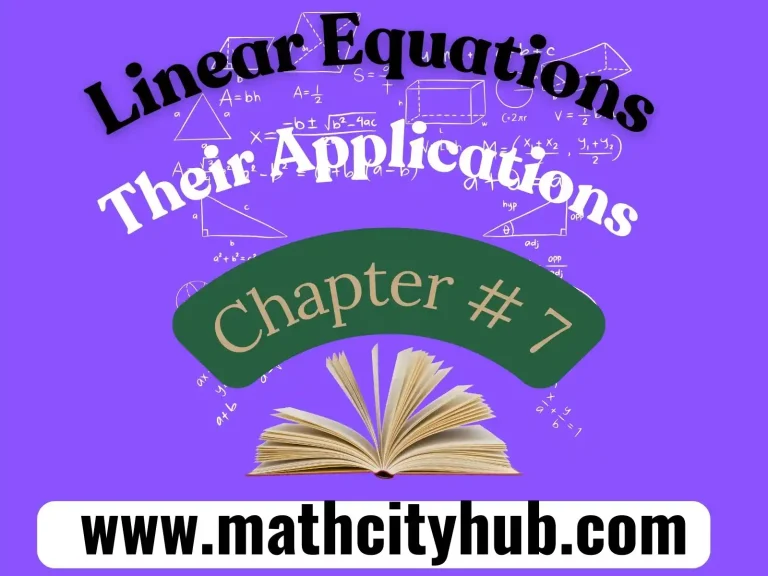Exercise 9.2:In geometry, points are considered collinear if they all lie on the same straight line, regardless of their distance from each other. The term “collinear” comes from the Latin words “col” meaning “together” and “linear” meaning “line.”
Here are some examples of collinear points:
- Three dots drawn in a straight line on a piece of paper.
- The vertices of a straight-edged ruler.
- The streetlights along a straight road.
- The points scored by a team in three consecutive free throws, assuming they all go straight through the hoop.
It’s important to note that collinear points can be:
- Close together: Like the dots mentioned in the first example.
- Far apart: Like the streetlights along a long road.
- Part of a line segment, a ray, or an infinitely long line: The concept of collinearity applies to all these types of lines.Exercise 9.2:
Here are some additional points to remember:
- Two points are always considered collinear since they can always be connected by a single line.
- Points can be collinear even if they are not in the same plane. For example, the stars in the constellation Orion are not all in the same plane, but they can still be considered collinear from a specific viewpoint.

Non-Collinear Points
In geometry, points are considered non-collinear if they do not all lie on the same straight line. This means you cannot draw a single line that passes through all the points.
Here are some examples of non-collinear points:
- Three dots forming a triangle: Imagine three dots placed at the corners of a triangle. They are not collinear because no single line can pass through all three points.
- The vertices of a square: Similar to the triangle example, the four corners of a square cannot be on the same line, making them non-collinear.Exercise 9.2:
- Points scattered randomly on a piece of paper: As long as no three points form a straight line, they are considered non-collinear.
Here are some additional points to remember:
- One point is always non-collinear to any other point: Since a single line only requires two points, one point by definition cannot be on the same line as any other.Exercise 9.2:
- Non-collinearity is only relevant in two or three dimensions: With more dimensions, there can be more complex relationships between points, and the concept of “colinearity” doesn’t directly apply in the same way.

Questions & Answers
Answer: Collinear points are two or more points that lie on the same straight line in the plane.
Answer:
The dots marking the hours on a straight clock face.
The endpoints of a line segment drawn on a piece of paper.
The vertices of a regular hexagon arranged in a straight line.
Answer: Non-collinear points are two or more points in the plane that do not lie on the same straight line.
Answer:
The vertices of a triangle.
Any three points forming a right angle.
Points scattered randomly on a piece of paper, where no three points form a straight line.
Answer: You only need two points to determine if they are collinear (they will always be). However, three or more points are needed to determine if they are non-collinear, as you need to check if any three points can form a straight line.
Answer: Yes, absolutely. Collinearity is not dependent on the distance between the points. Points can be very far apart and still be considered collinear as long as they lie on the same straight line.
Conclusion
Collinearity and non-collinearity are crucial concepts in understanding the spatial relationships between points in geometry, particularly on a two-dimensional plane.
- Collinear points represent a set of points that share the same straight line, regardless of their individual positions or distances.Exercise 9.2:
- Non-collinear points, on the other hand, do not lie on a single straight line. This means you cannot draw a single line that passes through all the non-collinear points.
Must Read:
- Exercise.3.1: Scientific Notation
- Exercise.3.2: Common and Natural Logarithm
- Exercise.3.3: Laws of Logarithm
- Exercise.3.4: Application of Logarithm
- Exercise.5.1: Factorization
- Exploring Various Types of Factorization
- Exercise.5.3:Remainder Theorem And Factor Theorem
- Exercise.5.4: Factorization of a Cubic Polynomial
- Exercise.6.1: Highest Common Factor
- Method of Finding Least Common Multiple
- Exercise.6.2: Basic Operations on Algebraic Fractions
Exercise.6.3: Square Root of Algebraic Expression
Title PDF
Title PDF
Azam Bodla
M.Phil. Mathematics, Content Writer, SEO Expert
Web Developer, Online Tutor
Call or WhatsApp: +923059611600
Gmail:azambodlaa@gmail.com






